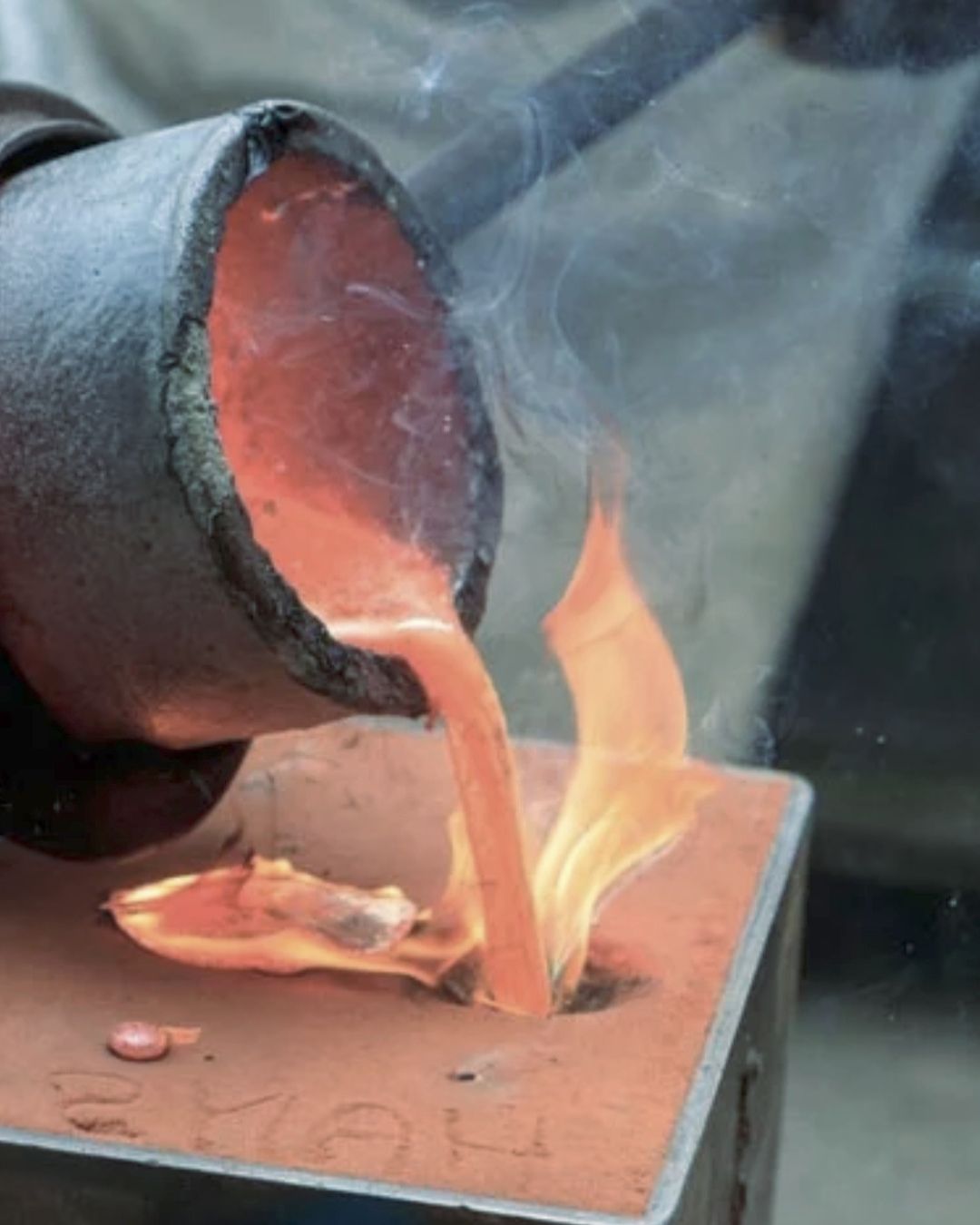A lamp that breathes new life into materials once seen as waste
At Dutch Design Week, Blom&Blom and vanPlestik have unveiled a pendant light that challenges our notions of sustainability, combining the modern art of 3D printing with the traditional craft of copper casting.

What distinguishes novelty from true innovation? While novelty is fleeting, fast-paced, and often short-lived, innovation stems from a more thoughtful process, bringing lasting change to our habits, daily lives, and even society. In design, we need to move beyond the obsession with the new and focus on rediscovering the value of materials refined by time – things once considered obsolete or waste that can be reclaimed and revitalized.
Dutch Design Week 2024 (Eindhoven, 19 – 27 October) was a vibrant platform for this conversation. Participating under the theme “This Future is Currently Unavailable”, Isola Design highlighted the critical role design plays in addressing urgent global challenges. With over 100 exhibitors across four distinct exhibitions at Area 51 in Strijp-S, one display stood out: “Forms Unfolding”. This exhibition presented a fusion of traditional design and cutting-edge innovation, capturing the spirit of designers who are redefining methods and fostering interdisciplinary collaboration.

Two makers, two recycled materials, one shared value
A prime example of this interdisciplinary approach is the collaboration between Blom&Blom and vanPlestik, two studios with distinct yet complementary approaches to sustainability. Blom&Blom, renowned for restoring industrial lighting, and vanPlestik, experts in transforming recycled plastic into bespoke, circular products, joined forces to unveil a preview of their first lamp from the Mutualism collection. This pendant light blends 3D printing with the ancient craft of copper casting, reimagining two contrasting materials – both repurposed and remelted – into a striking new form. The collaboration underscores design’s transformative power in creating sustainable solutions.

Blom&Blom, founded by two brothers passionate about restoring forgotten industrial pieces, believes that even the most mundane items hold untapped potential. Their work revolves around breathing new life into abandoned industrial lights, reinterpreting these objects with a contemporary touch. Handcrafted in the Netherlands, each piece is carefully restored by a team of artisans and engineers, ensuring that history is preserved while embracing modern functionality.

vanPlestik approaches sustainability from a different angle, focusing on the potential of circular plastics. Through large-scale 3D printing, they transform waste materials into custom-designed interior pieces. Their furniture collection proves that recycled plastics can seamlessly blend into modern interiors, challenging the notion that sustainability is a luxury or an afterthought. vanPlestik’s ethos is clear: the future of design is not about creating something entirely new, but about reimagining and repurposing what already exists.

Mutualism: reinterpreting low-value and discarded materials
While their methods differ, both studios share a deep commitment to craftsmanship, sustainability and precision. Their collaboration merges these values to create a series of lighting pieces made primarily from recycled materials.
The lamp at the heart of this collaboration exemplifies material reimagination. It features two 3D-printed shades supported by a hand-cast copper ring. Despite their starkly different textures and compositions, the materials share an unexpected similarity: both are typically found in everyday objects – such as packaging, wiring, and plumbing – that are often discarded without a second thought. By transforming these overlooked materials, the designers reveal their hidden potential.

The hand-cast copper ring is made from copper scrap, melted down and treated with oxidation to create a marbled, patinated surface. The lamp’s shades are 3D-printed from packaging waste, and the slight imperfections in this extruded material, combined with its thick, wobbly layers, create a rich, glass-like effect. The modular design of the Mutualism amp ensures that it can be easily repaired or recycled, underscoring the importance of longevity and circularity in contemporary design practices.
Sustainability is not a passing trend
The Mutualism project serves as a reminder that what is often discarded still holds immense potential. It is a reflection on the power of design to find value in the seemingly useless – turning waste into something purposeful. This is the essence of design: seeing potential in what others consider broken, focusing on repair and renewal. The project calls for action and optimism, inspiring us to believe that we can make a positive impact on the world.

Design has long been a powerful tool for reshaping society, not only influencing the way we consume but also challenging habits that contribute to environmental degradation. If design is to remain a force for good in the coming decades, we must cultivate skills that prioritize transformation and the creation of sustainable solutions. Sustainability cannot be a passing trend; it must be woven into the very fabric of design. It is not a luxury, nor an afterthought – it is an essential principle that must guide every creative decision.











![Nut C lighting series by MZPA [mazepa] + Kononenko ID - Ukrainian Design](https://designwanted.com/wp-content/uploads/2022/02/Nut-lighting-series-by-MZPA-mazepa-Kononenko-ID-Ukrainian-Design-scaled-1-scaled.jpg)